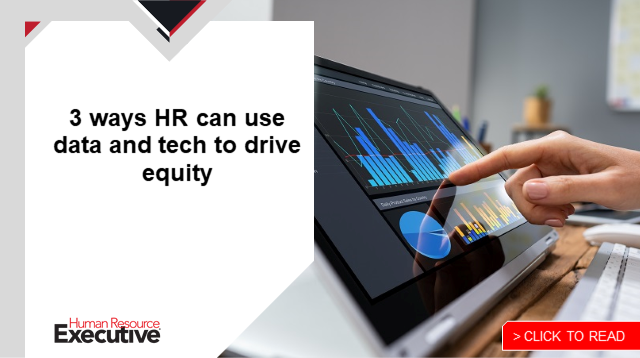One of the most frustrating and archaic HR practices is performance management, a process with which many companies struggle even today.
To move beyond the struggle, the first and primary realization we must accept is that performance management is not for HR’s benefit. Performance management is actually what its name implies: It’s all about managing people, work and projects.
No matter what outcomes HR teams may want to gain from the process (forced distribution, pay equity, deep succession plans, development strategy), the performance management process should ultimately revolve around actually helping people get their work done. This very simple idea is often lost on software vendors and consultants.
The fact is, great businesses operate from the bottom up. It’s the engineers, product managers, salespeople, retail workers, truck drivers and branch operations employees who make things happen. Certainly, they need budgets and clear lines of responsibility. But with experience and maturity, they can often set their own goals and do their best to delight customers. Performance management should not be something that gets in their way.
New software tools like those from Viva Goals, Betterworks, 15Five, Lattice and Workboard are designed to support the use of OKRs (objectives and key results) and create goal alignment, transparency, accountability, and personal and professional growth. Sounds good, doesn’t it? But here’s the reality. If you’re spending more than 20 minutes a week updating your goals, it is time you’re not spending on your job. We need to ensure that any time spent on performance-related activities is worthwhile.
 New research from Betterworks uncovers two profound points. First, goals should be agile and adaptable. When goals are rigid and don’t reflect changing work circumstances, employees feel trapped and goals are viewed as meaningless.
New research from Betterworks uncovers two profound points. First, goals should be agile and adaptable. When goals are rigid and don’t reflect changing work circumstances, employees feel trapped and goals are viewed as meaningless.
Second is that feedback conversations need to be collaborative and relevant to work and career goals. Frequency is often over-hyped. Sometimes you want to check in daily, sometimes weekly and sometimes not at all. What’s needed is a process in which employees can have quality conversations with their managers or peers whenever they need help or support.
This gets into the importance of performance management in the flow of work. If I have to log into an ERP system, fill out a bunch of goals and make sure they’re quantified in order to get credit for my work, I’m going to feel very frustrated. This is why salespeople hate updating Salesforce for their managers all the time. They are too busy selling!
For many years, vendors built performance management systems as top-down, goal-alignment platforms. These legacy tools required a heavy lift for everyone. HR teams had to implement them; managers had to force people to use them; and employees had to spend time learning them.
Today, tools such as Viva Goals, Betterworks, and Humu are designed not only for managing goals, they also have become platforms for conversations, projects and target metrics that track achievements and performance gaps. And they are deeply integrated into Microsoft Teams, Slack, Google Workspace and other important work applications.
They are also very easy to use. Viva Goals and Betterworks let employees view, monitor and update goals right in their email or collaboration systems. No need to fill out forms and update some ERP system to get credit for what you’re doing. Google, for example, is updating its decade-old performance process to enable conversations in the flow of work, embedded right in Google Workspace.
 Colgate just implemented Betterworks in the flow of work and loves the system primarily because of its integration with Google. Viva Goals is going to do the same for Microsoft customers.
Colgate just implemented Betterworks in the flow of work and loves the system primarily because of its integration with Google. Viva Goals is going to do the same for Microsoft customers.
Leaders really learned the importance of simplifying performance management during the pandemic. For example, in an effort to improve productivity, PepsiCo dramatically simplified its PM process during the pandemic and people were thrilled. The company asked several thousand people to crowdsource the top thing getting in their way at work. The most despised process to “shred” was performance management because it wasted enormous amounts of time.
An executive for a consumer goods company told me his team looked at email calendar data to analyze where and how people were spending their time. They discovered that their nine-level performance management and calibration process was wasting a million hours a year! Almost the entire month of December was spent on talent reviews and calibration meetings. The company cut the time spent by 75% in only a few months by simplifying and redesigning the process.
So, this old, often-hated, but important process is ready for change. But remember, this is a design project, not a software implementation. Your software should reflect and support the process you want to adopt. What we want out of performance management is a fair and equitable measure of performance—with two big outcomes. First, people want to know how they’re doing and how they can improve. Second, organizations want to find high performers and fairly distribute pay and rewards. Performance management should make this process defined, equitable and transparent.
 I applaud vendors for making this stuff easier. Many of the original products in this space were theoretically solid but difficult and impractical. They tried to automate and catalog goals when people are too busy or their work is creative or advance planning is difficult. So, when tools are easy and transparent to use, they can transform the way performance management happens.
I applaud vendors for making this stuff easier. Many of the original products in this space were theoretically solid but difficult and impractical. They tried to automate and catalog goals when people are too busy or their work is creative or advance planning is difficult. So, when tools are easy and transparent to use, they can transform the way performance management happens.
No matter what tool you are using, the key is to make sure the performance process is helping people. If your processes (and tools) don’t support people getting work done, then you aren’t managing performance, you’re actually impeding it.
The post Performance management for today? Simple, relevant and in the flow of work appeared first on HR Executive.